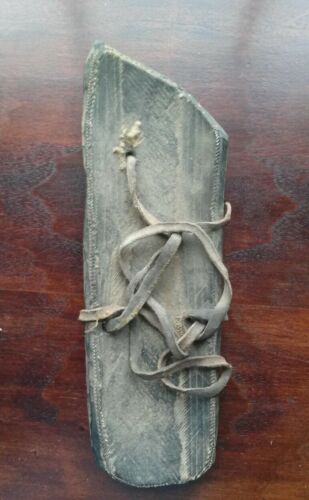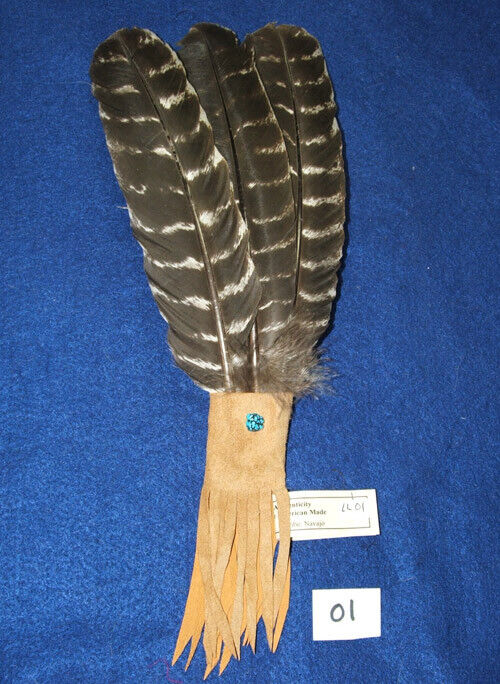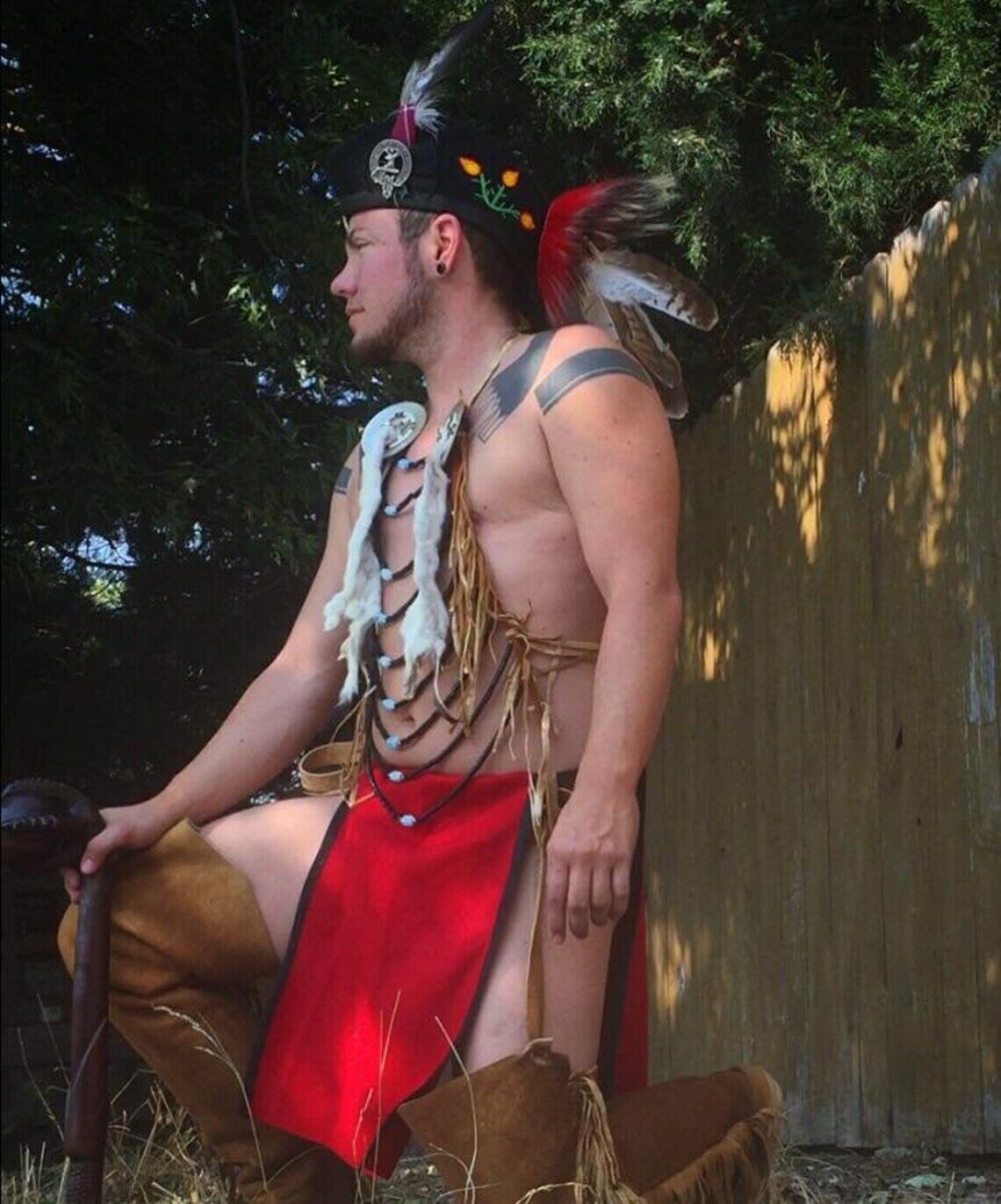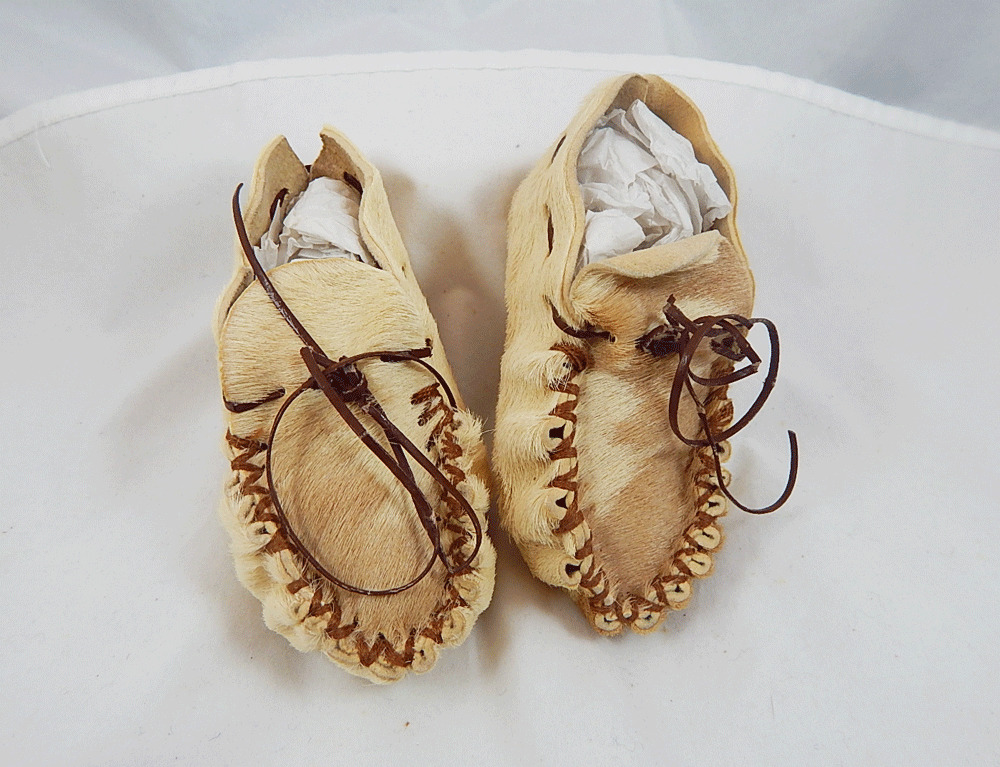-40%
Native American Apache Indian Antique Vehicle Rubber Tire Moccassin
$ 51.74
- Description
- Size Guide
Description
An excellent example of Native American Indian ingenuity, this Apache moccasin/sandal was constructed from an early vehicle tire. The tire remnant is thick and hard (hopefully it was softer when it was worn). There are three holes carved out to lace in the leather strapping. This item is from the collection of deceased Tucson, Arizona Anthropologist, William Neil Smith. There is heavy patina from age, rubber is hard, with engrained sand, dirt. There is only one for the right foot. It measures 10 7/16 x 3 3/8 x 3/4 inches, and weighs 9 ounces.As with all of our items, what you see is exactly what you'll get. Up for auction is descripted in the Title box.
Nice item, and a nice piece of Native American history. This item is from a family collection that they collected/bought as early as the 1970's, that's when they had a brick n mortar as this was their business since 1981, prior to his passing in 2007, with too many items to grade, appraise or otherwise, and has been in storage for 20+ years (in possession/storage since before 2007), so we are just trying to clear things out. By no means are we authenticators of any of these items, we try to give adequate information to the best of our ability and as the items are unpacked and placed up for auction/BIn.
Any questions or concerns please email prior to bidding/purchase to ensure your satisfaction of the item you are looking to purchase, and please refer to the photos, for your opinion of condition, etc. If you are truly interested in this item, feel free to email an offer, if bidding hasn't already begun. We have a 14-Day Return Policy, so be assured of your satisfaction. Please review the return item details and our feedback. If there is a problem, we will be quick to resolve it, (even after receipt of purchase, before leaving neutral/negative feedback contact us, thank you). Payment via pay pal and/or other arrangements should be paid within 3 days. As you check out and/or upon completion of the transaction, please leave your positive feedback and we will do the same because we enjoy satisfied customers. We do combine shipping (Free Shipping in the US Only, any questions about shipping, foreign or domestic, please ask prior), so check out our other many selection of items and if you win more than one bid we will send you a revised invoice. Thanks for your interest! Happy bidding! Enjoy eBay!
Smith, William Neil, 1920-
Collection Name:
William N. Smith papers,
Inclusive Dates:
1829-1975 (Bulk 1944-1970)
Physical Description:
24 linear feet
Abstract
This collection is divided into seven series: Biographical Information, General Correspondence, Writings and Publisher Correspondence, Field Notebooks and Logs, Research Files, Audio-Visual Media, and Supplemental Material. The collection includes biographical information, correspondence, writings, publications, field notebooks, field research data sheets, subject files, bibliography cards, photographs, negatives, color slides, motion picture film, and sound recordings, chiefly from 1944-1970, of William Neil Smith, relating to his anthropological field work amongst the Seri Indians of Tiburon Island and the northwest coast of Sonora, Mexico.
William Neil "Bill" Smith, Jr. was born May 5, 1920, at New York City (Broad Street Hospital, Manhattan), New York, the son of William Neil Smith, an architect, and Florence E. Derby. After his father died in 1934, Bill and his mother moved to Arizona. He attended high school at the Southern Arizona School (Sabino Canyon) in Tucson, 1934-1936 and the Palo Verde Ranch School in Mesa, 1937-1938. He attended the University of Arizona from 1939-42 and 1946-48, studying under Byron Cummings(Kinishba Ruins-Fort Apache Reservation-University of Arizona Summer School, Department of Archaeology) and Edward Spicer. He worked in the summer of 1937 at the University of Arizona Archaeological Field School held at the Kinishba Ruins on the White Mountain Apache Reservation. He graduated in May 1948 with an A.B. in Anthropology. He took graduate course work in 1950. He also served briefly in the Army in 1944-45.
From 1945-1967, Smith made many extended ethnographical field trips to Sonora, Mexico, to study the Seri Indians at Desemboque and Tiburon Island. His research included lifestyle, customs, language, genealogy, kinship, and cultural changes due to the influence of outsiders. He assisted the Seris by bringing much needed medicines and supplies to them. On four occasions, he brought groups of Seris to the United States to experience different cultures. He sought to educate people in the United States and Mexico about Seri culture and the problem of cultural change affecting the Seris through numerous lectures, publications, and film projects.
After concluding his studies in Sonora, Smith during three trips to Asia (1971-1972, 1975-1982, 1985-1993) carried out anthropological research in Australia, Bali, Thailand, and the Maldive Islands where he completed a research paper for the Republic of Maldives Department of Education on Islamic Youth, Development from Birth to 20 Years in 1992. He also contributed four detailed manuscripts to the Australian Department of Aboriginal Affairs - Alice Springs, Northern Territory covering research and participant observer studies of tribal problems in the Northern Territories (1988-1991) and lectures. Since his return from third trip to Asia and Australia, Smith has lectured on Islamic culture and worked on various articles related to Southwestern and Sonoran archaelogical data from his earlier unpublished notes.
Track Page Views With
Auctiva's FREE Counter

















